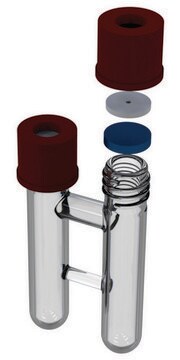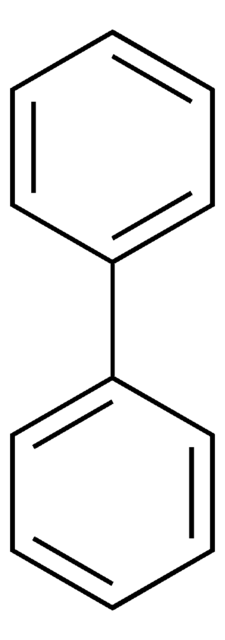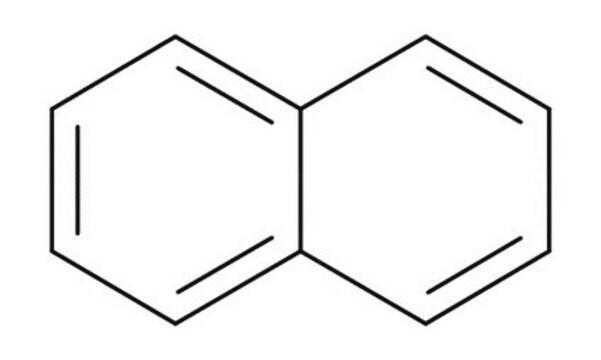01422
Melting point standard 79.5-81°C
analytical standard
Sinonimo/i:
Naphthalene
About This Item
Prodotti consigliati
Grado
analytical standard
Livello qualitativo
Densità del vapore
4.4 (vs air)
Tensione di vapore
0.03 mmHg ( 25 °C)
Temp. autoaccensione
978 °F
Durata
limited shelf life, expiry date on the label
Limite di esplosione
5.9 %
P. ebollizione
218 °C (lit.)
Punto di fusione
79-81 °C (±0.3°C)
80-82 °C (lit.)
applicazioni
food and beverages
pharmaceutical
Stringa SMILE
c1ccc2ccccc2c1
InChI
1S/C10H8/c1-2-6-10-8-4-3-7-9(10)5-1/h1-8H
UFWIBTONFRDIAS-UHFFFAOYSA-N
Cerchi prodotti simili? Visita Guida al confronto tra prodotti
Descrizione generale
Applicazioni
Additionally, this mp standard is also used as a temperature calibration standard in thermal studies.
Caratteristiche e vantaggi
- Melting point calibration standard traceable to primary standards (LGC, London)
- Grade: Analytical Standard
- Standard deviation up to ± 0.3 °C
- Provided with certificates of analysis and safety data sheet
Avvertenze
Warning
Indicazioni di pericolo
Consigli di prudenza
Classi di pericolo
Acute Tox. 4 Oral - Aquatic Acute 1 - Aquatic Chronic 1 - Carc. 2 - Flam. Sol. 2
Codice della classe di stoccaggio
4.1B - Flammable solid hazardous materials
Classe di pericolosità dell'acqua (WGK)
WGK 3
Punto d’infiammabilità (°F)
173.3 °F - closed cup
Punto d’infiammabilità (°C)
78.5 °C - closed cup
Dispositivi di protezione individuale
Eyeshields, Faceshields, Gloves, type P3 (EN 143) respirator cartridges
Scegli una delle versioni più recenti:
Possiedi già questo prodotto?
I documenti relativi ai prodotti acquistati recentemente sono disponibili nell’Archivio dei documenti.
I clienti hanno visto anche
Protocolli
US EPA Method 8270 (PAH only): GC Analysis of PAHs on SLB®-5ms
US EPA Method 610 describes the analysis of polynuclear aromatic hydrocarbons (commonly referred to as PAHs or PNAs) by both HPLC and GC.
HPLC Analysis of PAHs on SUPELCOSIL™ LC-PAH
-Xylene; Nonane; Decane; 1,2,4-Trimethylbenzene; Butylcyclohexane; Naphthalene
Il team dei nostri ricercatori vanta grande esperienza in tutte le aree della ricerca quali Life Science, scienza dei materiali, sintesi chimica, cromatografia, discipline analitiche, ecc..
Contatta l'Assistenza Tecnica.












